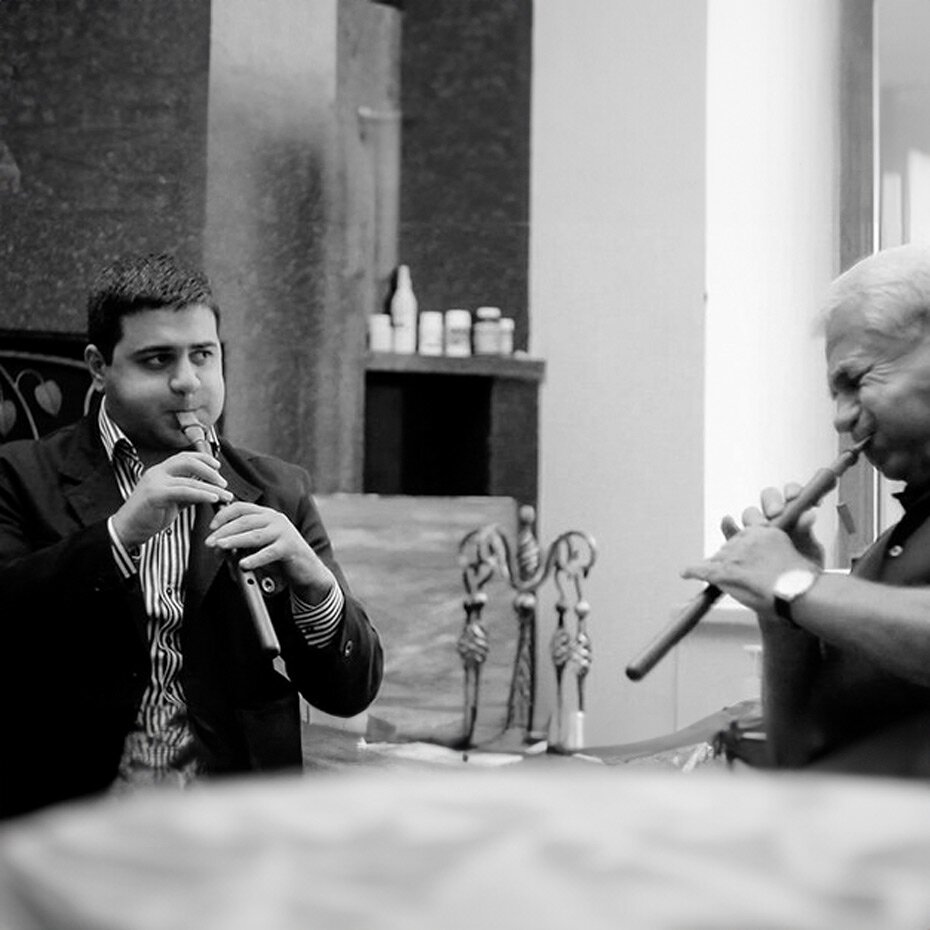Two melodious documentaries come from the Magdeburg film production company Blende39, Eva-Luise Volkmann and Peter Bräunig. "Mundton", a portrait of the international Jew's harp scene, shot during the 5th International Jew's Harp Festival in Amsterdam, was released in 2006. At the suggestion of Jew's harp and duduk player Sören Birke, a second film is now being made. "Bitter Apricot" is still in the middle of production. The music documentary tells the story of the relationship between the world-famous duduk player Djivan Gasparyan and his grandson, who wants to pass the duduk on to the next generation. Eva-Luise Volkmann from Blende39 spoke with Helen Hahmann about the motives and the appeal of approaching these two musical instruments in two documentary films.

Eva-Luise Volkmann and Peter Bräunig were studying journalism and media management when the filmmaker and Jew's harp player Gerd Conradt offered a seminar at Stendal University of Applied Sciences entitled "Video Poetry". When the opportunity arose in 2006 to travel with Conradt to the International Jew's Harp Festival in Amsterdam to make a portrait film about the Jew's Harp, Volkmann and Peter Bräunig rented a minibus with Grit Bemann and Jessica Preuß and set off.
When we arrived at the festival, we were most impressed by the fact that people from all over the world, from different cultures, all played this small instrument, which had an enormous effect. We didn't realize beforehand that the instrument had such a strong effect. We also didn't know that there were so many forms and types of Jew's harp in the world. It was such a distant world that was suddenly brought into this European context. There was something very original about this way of playing, something that touches you deep inside," Eva-Luise Volkmann recalls of the shoot in Amsterdam. The film was intended to portray the current Jew's harp scene and the emotions associated with it.
In the film "Mundton", many of the protagonists who are still influential today have their say: Tran Quang Hai, Albin Paulus, Anton Bruhin, Sylvain Trias, Luca Recupero. The variety of people portrayed in the film is fascinating. Sven "Roxi" Otto and Clemens Voigt, the founders of DAN MOI, can also be seen in the film, as well as the North Indian musician Bangalore Rajashekar on the Morchang and Steev Kindwald from the USA. "The film is very well known in the Jew's harp scene, although it has not yet been shown at festivals," reports Eva-Luise Volkmann. You can now also watch "Mundton" online at Vimeo.
The impressive story of duduk virtuoso Djivan Gasparyan and his grandson Djivan Gasparyan Jr. is told in "Bitter Apricot", which is due to be completed in 2016. It is the story of the young Gasparyan, who returns to Armenia from Los Angeles in his early 30s to learn to play the duduk from his grandfather. Gasparyan Sr. passes on the musical legacy to his grandson. This process has been accompanied on film by the Blende39 team since 2011. "The story of the film is about Djivan Sr., it's an almost fairytale-like story. Djivan Sr. heard the duduk for the first time at the age of 6 in a silent movie theater in Yerevan. Back then, the black-and-white films were accompanied by duduk ensembles. He was so fascinated and touched by this instrument that he decided to learn to play it. After the movie, he went to one of the men from the ensemble, Margar Margaryan, and asked him if he could give him an instrument. He actually got an instrument and started practicing on it. Margar Margaryan later became Gasparyan's teacher."
Eva-Luise Volkmann tells this story with the knowledge of the amazing path Gasparyan has taken. "When he was invited to a music competition in Moscow for the first time in the early 1950s, nobody knew what a duduk was. He won this competition out of 5,000 other participants and was presented with the first prize by Stalin: a gold watch. He went on to play many more competitions in the Soviet Union, but hardly anyone in the West knew him back then." It was only when Brian Eno became aware of the duduk and Gasparyan in 1989 that the instrument and its performer found their way to the West. His first album "I will not be sad in this world" was released by All Saints Records in the UK.
Convinced that the knowledge of the duduk's melodies and playing technique must be kept alive, Gasparyan's grandson has now set out to learn the art of playing the duduk himself. Gasparyan Jr. says, "the sound is your voice. I think if I couldn't speak with my voice, I would articulate myself through my instrument, the duduk. Duduk playing comes from within you, everything matters: how you speak, your lifestyle, your thoughts. It all plays an important role." Djivan Gasparyan Sr. was born in 1928, today he gives concerts together with his grandson. "The deepest concern of Djivan Sr. and Djivan Jr. is to carry this music into the world," Eva-Luise Volkmann observed during the film shoot. She also traveled to Yerevan with Peter Bräunig, Sören Birke and Rosanna Karapetyan to film a concert by the two duduk players to mark the 100th anniversary of the Armenian genocide in April 2015, thereby also documenting the social significance of duduk music for many Armenians worldwide.
Here you can see a trailer of the movie "Bitter Apricot".
And here is the Facebook page with the latest information on BITTER APRICOT.
You can also listen to the interview here at freie-radios.net.
And more info about Blende39 can be found on their website:

